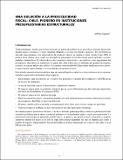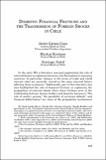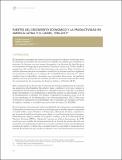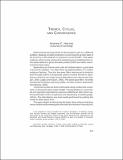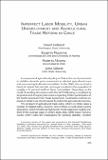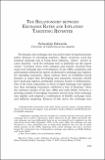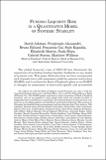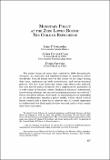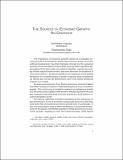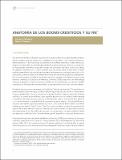Search
Now showing items 11-20 of 82
Una solución a la prociclicidad fiscal: Chile, pionero en instituciones presupuestarias estructurales
El artículo evalúa los pronósticos oficiales del gobierno respecto del desempeño de la economía y las cuentas públicas en un grupo grande de países. Su principal resultado es que los pronósticos oficiales sobre el presupuesto y sobre el PIB pecan —en promedio— de exceso de optimismo, y que el sesgo ...
Domestic financial frictions and the transmission of foreign shocks in Chile
In the early 90’s a literature emerged emphasizing the role of external factors in explaining business cycle fluctuations in emerging countries. In particular changes in the terms of trade and world interest rates are generally viewed as the main external factors affecting these economies. Additionally ...
Fuentes del crecimiento económico y la productividad en América Latina y el Caribe, 1990-2013
Este documento examina las experiencias de crecimiento de 23 países de América Latina y El Caribe en cuatro subperíodos de análisis entre 1990 y 2013. En función de la disponibilidad de datos, se ha realizado tres tipos de ejercicio. El primero abarca 18 países de América Latina y cinco de El Caribe, ...
Trends, cycles, and convergence
Determining turning points in the business cycle is a difficult problem. Making sensible predictions concerning the growth path of an economy in the medium or long term is even harder. This paper explores what can be achieved by analysing and modeling time series observations on gross domestic product ...
Imperfect labor mobility, urban unemployment and agricultural trade reform in Chile
A component of agricultural policy in Chile is the use of price bands to stabilize domestic price movements in selected agricultural crops and processed agricultural commodities. In the 1990s, the use of price bands for wheat, fats and oils, and sugar resulted in the equivalent of roughly a 22 percent ...
The relationship between exchange rates and inflation targeting revisited
For decades, the exchange rate was at the center of macroeconomic policy debates in emerging markets. Many countries used the nominal exchange rate to bring down inflation, –others—mostly in Latin America—used the exchange rate to implicitly tax the export sector. Currency crises were common and usually ...
Funding liquidity risk in a quantitative model of systemic stability
The global financial crisis of 2007–09 has illustrated the importance of including funding liquidity feedbacks in any model of systemic risk. This paper illustrates how we have incorporated such channels into a risk assessment model for systemic institutions (RAMSI) and it outlines the Bank of England’s ...
Monetary policy at the zero lower bound: the Chilean experience
The global financial crisis that started in 2008 dramatically changed the analysis and implementation of monetary policy worldwide. Central banks were at the center of the stage during that time implementing both conventional and unconventional policies. Not only were monetary policy rates drastically ...
The sources of economic growth: an overview
The importance of economic growth cannot be overstated. Income growth is ssential for achieving economic, social, and even political development. Countries that grow strongly and for sustained periods of time are able to reduce their poverty levels significantly, strengthen their democratic and political ...
Anatomía de los booms crediticios y su fin
¿Cuáles son las principales características de las bonanzas o booms crediticios y sus efectos sobre las fluctuaciones macroeconómicas? Este artículo responde esta pregunta aplicando un método que propusimos en un trabajo anterior para identificar y medir bonanzas crediticias con datos de 61 economías ...

